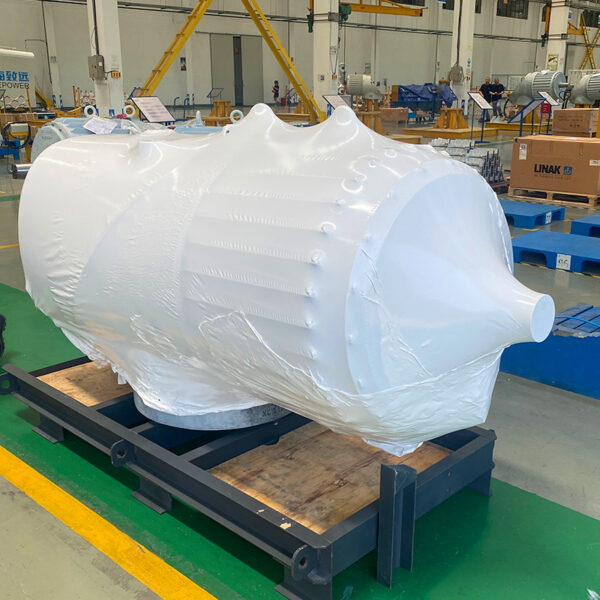Shrink wrap costs can vary greatly, creating confusion and overspending for many buyers. Misestimating costs may lead to inefficient budgeting or wasted materials. Understanding pricing factors simplifies purchasing decisions.
The cost of shrink wrap depends on the application, material, machine type, and labor. Prices range from $0.02–$0.20 per square foot for film to $1,000–$200,000 for equipment. Services for boats and roofs cost $12–$20 per foot.
Explore the pricing influences, from film type to machine options, to understand shrink wrap costs.

Cost Breakdown of Shrink Wrap Materials
Shrink Wrap Film Costs
Shrink wrap film is typically priced between $0.02 and $0.20 per square foot. The type and thickness of the film play a significant role in determining the cost. For instance, thin PVC film is the most economical option, while polyolefin and polyethylene are slightly more expensive due to their durability and versatility.
When using industrial-grade films for applications like boat or roof protection, costs can increase due to added features such as UV resistance. For instance, shrink wrap machines in industrial setups require stronger materials to maintain efficiency and minimize material waste.
Examples by Application
Light-duty shrink wrap for packaging consumer goods costs less, whereas UV-resistant films for outdoor use or large industrial products incur higher costs. Bulk purchasing can further reduce per-square-foot prices, making it an attractive option for businesses like labeling or packaging factories.
Equipment Costs for Shrink Wrapping
Manual and Semi-Automatic Machines
Manual and semi-automatic shrink wrap machines are ideal for small businesses or low-volume needs, with prices ranging between $1,000 and $10,000. They are widely used in industries that also rely on flag labeling machines or similar equipment for product identification.
Fully Automatic Machines
High-speed automatic machines for shrink wrapping cost between $15,000 and $200,000. These machines are suited for large-scale operations where efficiency and precision are paramount. Companies using customized labeling machines or high-volume bottle labeling machines often benefit from integrating shrink wrap capabilities for added functionality.
Examples of Use Cases
Small setups, like wrapping small batches of products, can rely on manual machines. For high-volume outputs, such as in beverage or electronics industries, fully automated machines offer superior speed and efficiency.

Labor and Operational Costs
Labor Costs for Manual Wrapping
Manual shrink wrapping requires skilled workers, and labor costs vary depending on regional wages. This can significantly affect the total cost, particularly for small-scale operations.
Automation Cost Efficiency
Automated shrink wrap systems reduce labor dependency. The initial investment may seem high, but they can save costs in the long run, especially when combined with equipment like vacuum packaging machines to streamline the production process.
Shrink Wrapping Service Costs
Boat Shrink Wrapping Services
Wrapping boats typically costs $12–$20 per foot. For a 25-foot boat, this translates to $300–$500, including materials and labor. These services often utilize UV-resistant film to protect against environmental exposure.
Roof Shrink Wrapping Costs
Roof shrink wrapping costs range from $1.50 to $2.00 per square foot. This method provides a waterproof and weather-resistant solution for temporary protection, ideal for areas prone to heavy rainfall.
Factors Influencing Prices
Travel costs, material quality, and complexity of the wrapping process can all influence service pricing. Professional setups using advanced tools like barcode printers ensure efficient and precise application.
Factors Influencing Shrink Wrap Costs
Material Type and Thickness
PVC film is the cheapest but less durable, while polyethylene offers high strength and UV resistance. Polyolefin is preferred for its balance of durability and transparency.
Customization and Add-Ons
Customizations, such as company logos or colored films, can increase costs. These features are common in industries that rely heavily on industrial label printers for branding and identification.

Cost Comparisons by Applications
Industrial Use
Industrial shrink wrapping, such as pallet wrapping, is generally less expensive per square foot due to large quantities. Companies frequently combine this with carton stretch wrapping machines to optimize logistics.
Boats and Marine
Marine shrink wrapping incurs higher costs due to the requirement for UV protection and complex shapes.
Roof Protection
Roof shrink wrapping is pricier per square foot because of its weatherproofing demands and difficult application process.
Maintenance and Longevity
How Long Does Shrink Wrap Last?
Shrink wrap typically lasts 6–12 months, depending on exposure. Outdoor applications may require periodic maintenance or replacement to maintain effectiveness.
Replacing or Repairing Wrap
Replacing damaged or worn-out wrap adds to the overall cost. Using durable materials and professional application methods can reduce these expenses.

DIY vs. Professional Shrink Wrapping
DIY Shrink Wrapping Costs
DIY setups, using a heat gun and shrink wrap film, can cost as little as $50–$200. This option works well for small projects but requires time and expertise.
Professional Services
Professional shrink wrapping is more reliable and efficient but comes at a higher cost. For businesses wrapping large volumes, professionals using high-end equipment such as shrink wrap machines ensure superior results.
Common Challenges and Disadvantages
Shrink Wrap Drawbacks
While effective, shrink wrap isn’t eco-friendly. Disposal can be challenging, and incorrect application leads to wasted material and increased costs.
Hidden Costs
Hidden costs like damaged goods, material waste, or downtime due to equipment failure can arise. Investing in quality materials and trained operators mitigates these risks.
Conclusion
Shrink wrap costs depend on material, equipment, labor, and application. Understanding these factors helps businesses make informed decisions, maximize efficiency, and control budgets.
For professional shrink wrap solutions, consider combining with a filling machine or labeling machine to streamline your production needs.









